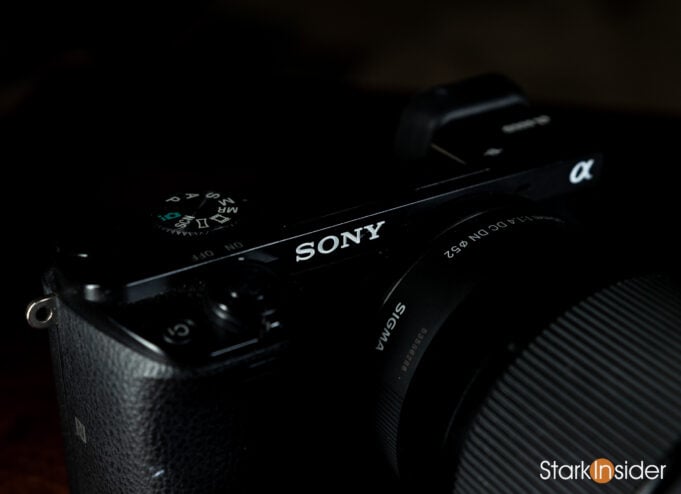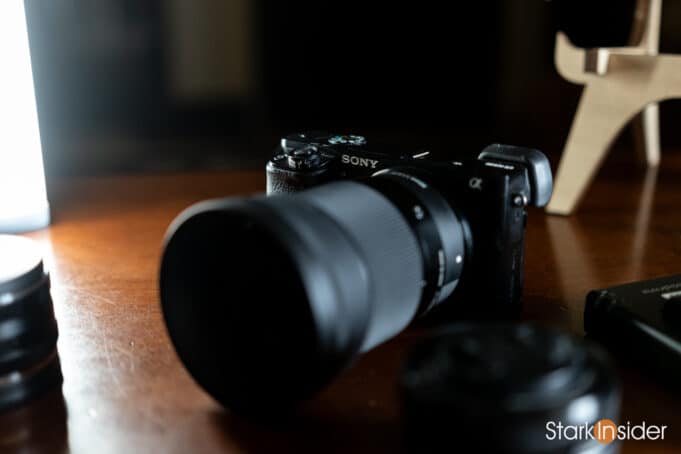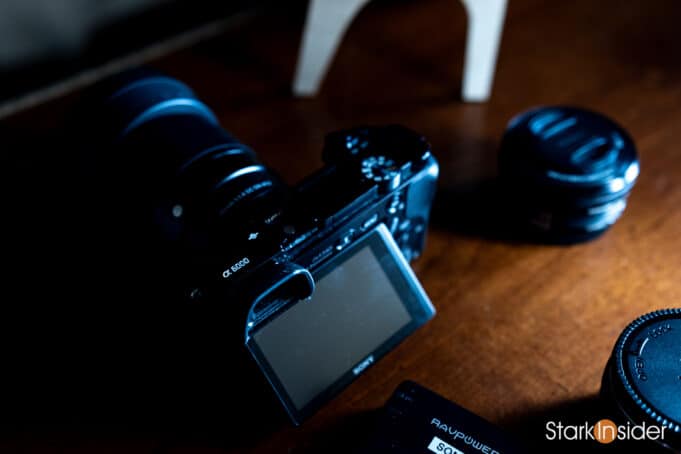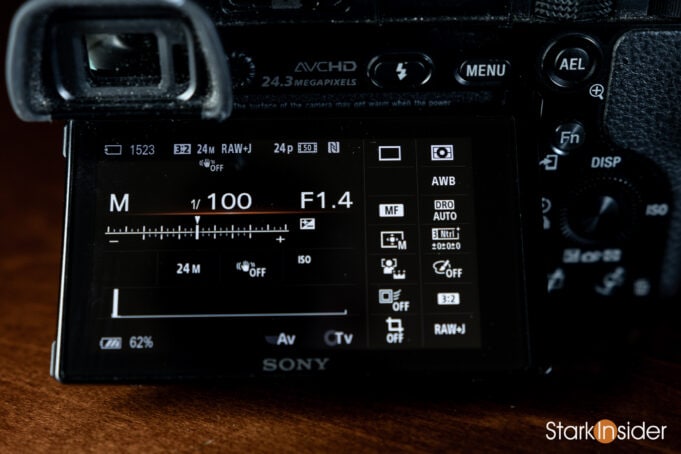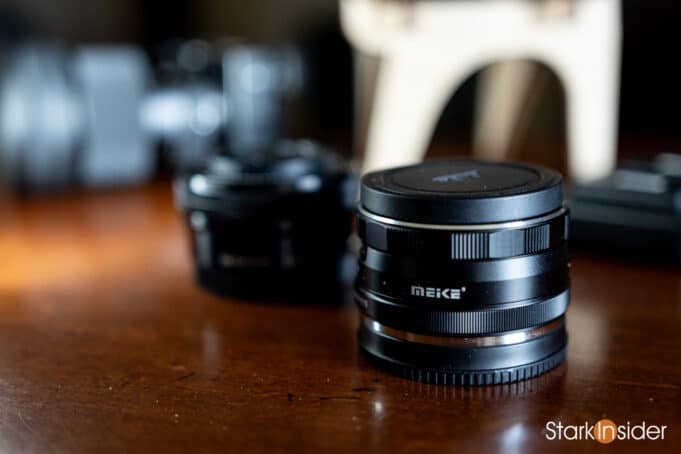Sony a6000

Sony | ILCE-6000 | 2014 | Mirrorless Camera | $549 USD
- Compact
- Inexpensive
- Shoots beautiful 24MP stills using standard SD cards
- No 4K video
- IBIS not to be found (no big deal really!)
- Won't impress your friends much
Is the landmark mirrorless camera, the Sony a6000, still worth buying today? (Spoiler alert: yes!). In this Sony a6000 review for 2025, we revisit one of Sony’s most iconic APS-C mirrorless cameras to see if it’s still a worthy travel companion.
For a basic rangefinder-style 24MP camera that came out in 2014, surely the a6000 should not be on your shopping list? Right?!
Well, maybe not so fast.
As I recently discovered, though it’s over 10 years old (might as well be a century by today’s standards), the a6000 packs a punch that belies both its size and price. Should you be looking for a slick and capable camera that slips easily into a travel bag, this iconic Sony model could still be a good choice. In 2025, used models go for ~$350—less than a new lens.
That’s what I decided, at least.
Sony Alpha APS-C Camera Comparison (2025)
| Feature | Sony a6000 |
Sony a6100 |
Sony a6700 |
|---|---|---|---|
| Release Year | 2014 | 2019 | 2023 |
| Max Video Resolution | 1080p | 4K | 4K + 10-bit |
| Touchscreen | ❌ | ✅ | ✅ |
| Real-Time AF | ❌ | ✅ | ✅ (AI-powered) |
| Price (used/new) | ~$350 | ~$650+ | ~$1,200+ |
Conclusion? If you need 4K, go newer. If you want pure stills fun, the a6000 still slaps.
With an upcoming trip to London, Loni Stark and I wanted something more artistically appealing than the hyper-saturated and overly-processed look produced by today’s iPhone cameras. Sure, no doubt, iPhones and Androids can be great for social media and getting attention. But there’s something decidedly detached in look and feel about the results. Too much AI? Computational photography? Heavy-handed, crowd-pleasing stuff?
Instead, I decided to dig deep into my camera bag and storage closet.
If I were shooting video it would be an easy decision: Panasonic GH5 or GH6 for travel and compact work; and the superlative RED Dragon for studio work.
But this was all about photography.
Enjoying the sights of London — and I guess with a little bit of dreamy romanticism sashaying around town clicking away old-school style and capturing the lights and charms and moments. Last Night in Soho!
All captured onto an SD card — no less. Without cloud storage, and without the computational processing we were trying to avoid.
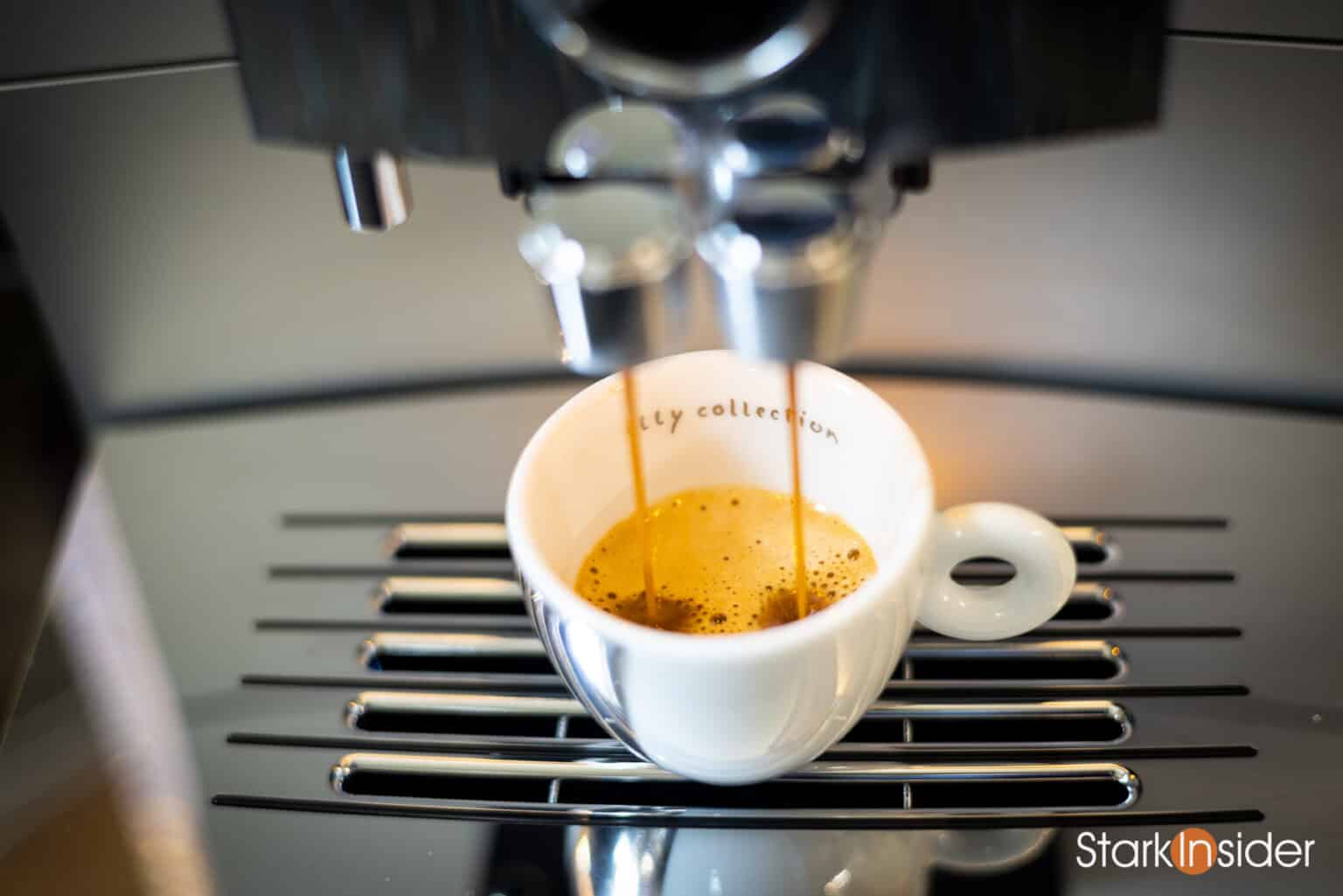
The logical choice might be the heavyweight Canon EOS R5. We use that flagship, full-frame camera to take 45MP archival stills of Loni’s artwork and also for product photography here on Stark Insider. That camera is breathtakingly good. Beautiful and accurate color (blows away the iPhone in that regard). Just magnificent stuff.
However, on the downside, despite being a mirrorless camera, the R5 is still relatively bulky when it comes to travel and attempting to minimize weight. It’s also very expensive. We would constantly be thinking about the R5. Where is it? Did we lose it? Is someone lurking nearby ready to snag it from our hands?
Sony Alpha a6000
APS-C Interchangeable-Lens (ILE) Camera
Key Specs & Features
- 24.3MP APS-C Exmor CMOS Sensor
- BIONZ X Image Processor
- 1080p Video
- 1.44M-Dot OLED EVF (0.7x magnification)
- 3.0″ 921.6k-Dot Tilting LCD Screen
- Up to 11-fps Shooting, ISO 100-32000
- 179 Phase-Detect AF Points with Fast Hybrid AF
- Wi-Fi, NFC
- Lens mount: Sony E-mount
- Media: Single SD card slot
- Dimensions (W x H x D): 4.7 x 2.6 x 1.8″ / 120 x 66.9 x 45.1 mm
- Weight: 12.1 oz / 344 g (Body Only), 14.7 oz / 418 g (With Battery)
- Release Year: 2014
- Original MSRP: $549 USD
- Availability/Buy: Look on Amazon for Sony a6000 deals
Then I (inevitably) stumbled upon the long lost Sony Alpha a6000. Heaped amongst a small, somewhat disorderly pile of kit destined for eBay, its compact size and appealing style caught my eye — despite the need for a bit of a dusting.
Ever since cameras like the GH5 and R5 and then GH6 came along we didn’t really use the a6000 so it sat there with a kit lens, spare batteries and a (nice) Sigma lens waiting for a buyer. Luckily I never got to it, and my procrastination in this case paid dividends.
Sony a6000 Review 2025: Why This Camera Still Shines
For anyone wondering if it still holds up in 2025, this Sony a6000 review should help clarify what you’re getting for your money.
Like a kid at Christmas, I charged the battery and powered up the a6000. No issues. Everything worked as well as it had in 2014.
Snapping a couple of quick shots, I was reminded how satisfying the shutter action is on this thing. Excellent. It’s also very fast. Focus seemed better than I remembered as well.
Then there’s the ergonomics. Not bad. I’m used to traditional DSLR and larger mirrorless designs so the rangefinder layout is a bit different for me. Still, it didn’t take long to get up to speed. Part of that has to do with Sony providing just enough stuff to get the job done. For instance, there are only two dedicated custom buttons (though you can customize a few non-dedicated ones as well). And on the top plate there is only one dial instead of the now universally standard two.
2025 Snapshot: Is the a6000 Still Worth It?
Over a decade later, does this budget-friendly legend still shoot straight?
Yes. In 2025, you can score a used Sony a6000 body for around $300–$400. That makes it a ridiculously good deal if:
You shoot mostly photos, not video. (though its video is absolutely fine in a pinch, especially with a retro lens to give it some real character)
You want something lightweight, compact, and a bit retro cool.
You’re more into shutter satisfaction than touchscreen menus and AI enhancements.
It’s still fast. Still sharp. Still a joy to carry. No 4K? No problem—especially if you’re focused (pun intended) on still photography, travel, or learning manual lenses.
What I learned is that, with the a6000, you’re not overwhelmed. There’s enough here to tweak the settings to your liking, but not so much that you’d need to spend days and weeks on end digging through menus. Those new to photography will, of course, need to spend the requisite amount of time learning about the exposure triangle and the various shooting and focus modes. But that would be the case with any camera for a newbie. Anyone else who has spent time with a modern digital camera will find things familiar and comfortable.
We bought the a6000 way back when for $549 USD. That included the kit lens — the one that is widely scorned. Over the years I added a Sigma 30mm prime that does well in low light, and produces quality far beyond its price point.
Bonus: What the a6000 Can Teach Us in an AI World
In an era of generative fill, AI sky replacements, and 200MP phone sensors, the a6000 is a reminder of something simple:
You don’t need the newest thing to tell a great story.
A good photo isn’t about megapixels, it’s about moments.
Art comes from constraint. Not convenience.
If you’re the kind of person who still likes vinyl, analog synths, or Super 8 film (and a retro game or two!)? This one’s for you.
Before we headed to London, I decided to have some inexpensive fun and buy a fully manual lens. In this case a 25mm E-mount made by Meike (see above photo). Never heard of them before. The price was right, at only $75 USD! And the focus and aperture rings reminded me of vintage Canon lenses in the best way possible.
Pro Tip:
Enable “Release Without Lens” in the settings menu if using manual primes like the Meike 25mm. It’s in the Custom Settings tab under Lens Comp..
Playing around in advance of our trip to the UK, I couldn’t help but grin ear to ear when switching the a6000 to manual mode (M) and twisting the rings to compose at will — all with absolutely no digital intervention. Thankfully, there is a setting in the a6000 menu that allows you to shoot without a lens attached (“Release w/o Lens”) or at least when the camera thinks there’s no lens attached.
Favorite Travel Pairings: Lenses that Shine in 2025
If you’re breathing new life into an old Sony body, these are three fantastic lens options for 2025:
Sigma 30mm f/1.4 DC DN – Creamy bokeh, fast AF, under $300. A no-brainer.
👉 Check price on AmazonSony 16-50mm OSS Kit Lens – Maligned by pros, but decent for casual wide-to-portrait shots and small enough to vanish in your bag.
👉 Still available hereMeike 25mm f/1.8 Manual – Retro manual focus ring? Check. Vintage charm? Check. Great value for $75? Definitely.
👉 See the Meike on AmazonFun tip: Manual focus with focus peaking = budget Leica vibes.
After re-acquainting myself with this old Sony, I realized something: this is the form factor that was once the domain of Micro Four Thirds (MFT). Small body. Small lenses. Small batteries. Absolutely ideal for lightweight travel, without compromising on quality. Plus, if you shop carefully you can get a nice setup for a reasonable sum.
In any case, I know the proof is in the pudding. Ultimately the photos we take in London will be the final and most important test.
In closing this Sony a6000 review for 2025, I’d say there’s still plenty to love about this classic Alpha model.
Yes, I realize updated models like the Sony a6500, a6600 and a6700 have newer features (touchscreens) and faster processors. But I don’t need 4K video. I really don’t need anything more than the a6000 already provides. Besides, I already own one! And, most importantly, this trip is all about the joy of street photography, not a fruitless debate about tech specs. I’ve owned my a6000, it seems like forever. I never sold it. And I smile every time I grab it from my camera bag.
Everything You Need to Get Started with the Sony a6000 (2025 Edition)
- Sony a6000 Body – Still a powerful little mirrorless gem
- Sony 16–50mm Kit Lens – Compact and versatile for walkaround shots
- Sigma 30mm f/1.4 – Sharp, low-light prime lens for portraits and street
- Meike 25mm f/1.8 Manual Lens – Budget vintage-style glass with tactile focus
- Extra NP-FW50 Batteries – The a6000 chews through power, pack spares
- High-Speed SD Card – Go for UHS-I U3, 64GB or higher for fast burst and video
- Small Camera Bag – Protect your gear while keeping it lightweight
- Mini Tripod or Hand Grip – Great for low angles, time-lapses, or group shots
Pro tip: Add a lens hood and wrist strap for a subtle stealth look… and fewer neck aches.
For those considering a crop APS-C camera without breaking the bank — one that has a massive lens catalog and one that can easily tuck into a travel bag — I’d wholeheartedly recommend you check out the Sony a6000. A milestone camera if there ever was one. If you’re looking for a reliable mirrorless camera on a budget, the Sony a6000 in 2025 is hard to beat.
Frequently Asked Questions
Is the Sony a6000 still worth it in 2025?
Yes. Despite being over a decade old, the Sony a6000 is still a great budget mirrorless camera in 2025—especially for photography. It offers fast autofocus, a 24MP APS-C sensor, and a compact, travel-friendly design.
What is the price of the Sony a6000?
Used Sony a6000 bodies typically sell for $300–$400, depending on condition. It's an excellent value for beginners, travel shooters, and enthusiasts alike.
What are the best lenses for the Sony a6000?
Popular lenses for the Sony a6000 in 2025 include the Sigma 30mm f/1.4 for portraits and low light, the Sony 16–50mm OSS for all-around travel, and the Meike 25mm f/1.8 manual lens for creative shooting on a budget.
Does the Sony a6000 shoot 4K video?
No, the Sony a6000 is limited to 1080p Full HD video. If you need 4K, consider a newer model like the Sony a6100 or a6700.
Is the Sony a6000 good for beginners?
Yes, the a6000 is ideal for beginners. It balances manual control and auto modes, making it great for learning photography without being overwhelmed by features.

